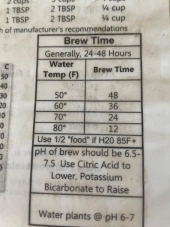2.1 Acre permaculture Lot in Greenbush, ME. SE facing S sloping
1680 sq ft double wide mobile home on cement slab. 3 bedroom, 2 bath, cathedral ceiling open concept living and dining room area.
Please Note: No Owner Financing Available
For pictures please see our listing:
http://www.forsalebyowner.com/listing/Greenfield-Rd-Greenbush-ME/54fa714baff839c1118b4595
Attached greenhouse, on south side of house, 15’ x 55’ with 8mm diffused polycarbonate roof and glass walls, built in 2013. Framed with 2’ x 6’s and hemlock walls. Ready to be heated by included wood stove. Seven entrances and attached chicken coop. Deck is half in greenhouse, half outside. Wash station and sink, 2 2.5’ x 14’ beds and 1 3’ x 8’ kitchen herb bed, 3’ x 20’ bed. 3’ x 3’ stepped strawberry beds. Crushed stone floor with 1000 feet of ½” irrigation pipe installed in stone for future hot water circulation.
Chicken coop designed to be passive solar heated with metal roof. 8’ x 8’ with 4’ x 8’ chicken area and 4’ x 8’ greenhouse. Solar powered, automatic door with photo sensor. 8’ x 8’ adjacent chicken yard and composting area.
12’ x 36’ x 10’ stand alone hoophouse greenhouse with 4’ hemlock sidewalls and 8mm diffused polycarbonate roof. Insulated around sill to below frostline and has 200’ of 4” corrugated, perforated drainage pipe installed 1 foot deep into gravel floor. Air can be circulated through pipe to use insulated gravel pad as heat mass. A 8” rocket mass heater has been installed along north wall on inside of greenhouse, feed tube is in the NE corner and goes underground, exiting northwest corner. 6 gauge rebar mat panels installed on inside of greenhouse frame for added rigidity. In the walls two 3000 cfm exhaust fans with shutters and a 2200 cfm solar powered gabel exhaust fan, with 50 watt solar panel installed in west end. 2 electric actuated intake shutter vents installed on east end. 6’x 8’ door on each end. Placed on gravel pad/terrace within the recently installed and partially planted 20,000 sq. ft rain harvesting hugel swale system.
System is designed to carry water from upper 20’ x 20’ x 4’ deep pond (dug, not finished) throughout 1000’ of zigzagging hugel mounds to lower pond (test pit dug, not finished, does hold water). Test pit for third pond dug as well, not finished. Includes perennial plantings described below as well as medicinal plantings (Echinacea, nettle, chamomile, calendula, ellecampain, hyssop, etc) and some annual plantings.
Intensive 25’ x 100’ fenced in garden adjacent to attached greenhouse (within 15’ of kitchen door). Includes 17 3’ x 15’ framed raised beds with 1’ x 8’ hemlock; 16 have been used for rotational annual production, 1 is strawberry bed. There are also 2 other unframed 3’ x 15’ strawberry mounds. Area includes 6 of the apple trees, 6 of the peach trees, small 4’ x 12’ x 2’ deep pond (dug, not finished) that is outflow for wash sink in attached greenhouse. Designed to flow along peach terrace, which contains other medicinal plants, sunchoke patch, and 4 grape vines along fence.
We have planted over 40 trees: 10 apple trees (14 varieties), 9 peach trees, 4 pear trees, 2 black cherry trees, 2 plum trees, 3 Carpathian walnut trees, 1 gingko, 4 linden, 2 redbud, and 4 honey locusts. All fruit trees are 2-5 years old.
Perennial shrub plantings include: over 60 high bush blueberries (multiple varieties), 8 elderberries, 6 honeyberries, 6 seaberries, 6 grape vines, 2 arronias, 10’ x 50’ raspberry patch (4 varieties) and 6 arctic kiwis (males and females), several strawberry patches.
Adjacent to house is a gambrel tool shed that is 8’ x 16’ with metal roof, placed on compacted pad.
A second shed, 12’ x 12’, three stories, originally planned to also be a climbing tower and possible studio. Top story is a greenhouse with 7mm solex panels on south side of metal roof. Solar powered peak vent. First story currently used for tool storage, second story used as storage. 2’ x 6’ construction throughout. Upper floors currently accessed via ladder, but plans for stairs exist.
Propane powered 7kw automatic standby generator on-site with 2 100 gallon tanks.
16’ Gate with solar powered gate opener at beginning of 100’ gravel driveway.
Lower half of property (bottom of hill) is undeveloped forest, has harvestable white pine, spruce, hemlock, and poplar. Prime for agroforestry. There is also a 50’ x 100’ undeveloped “bowl” between house and road to the north that contains mature white pine and poplar.
Sale of house could include tips and plans for further permaculture development if desired.









